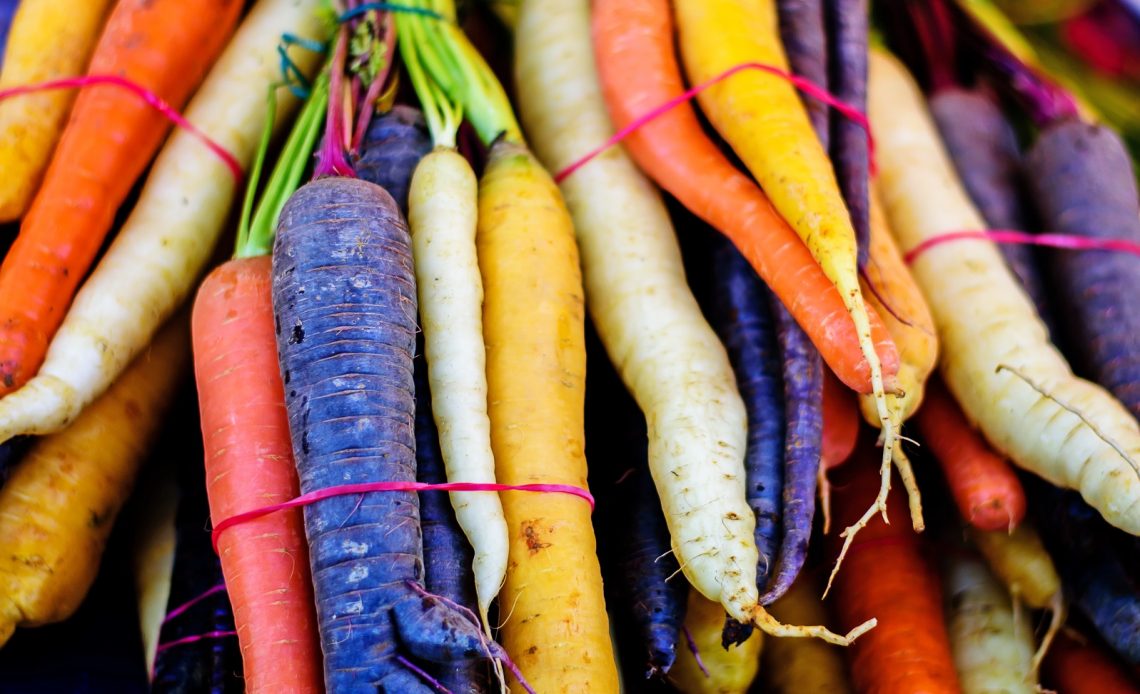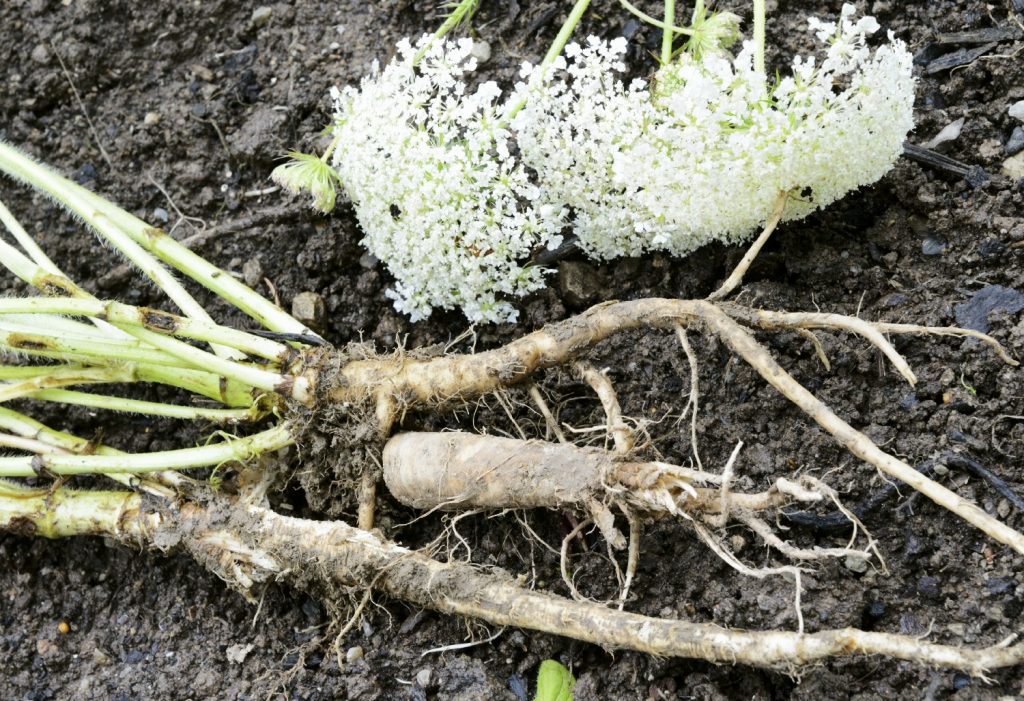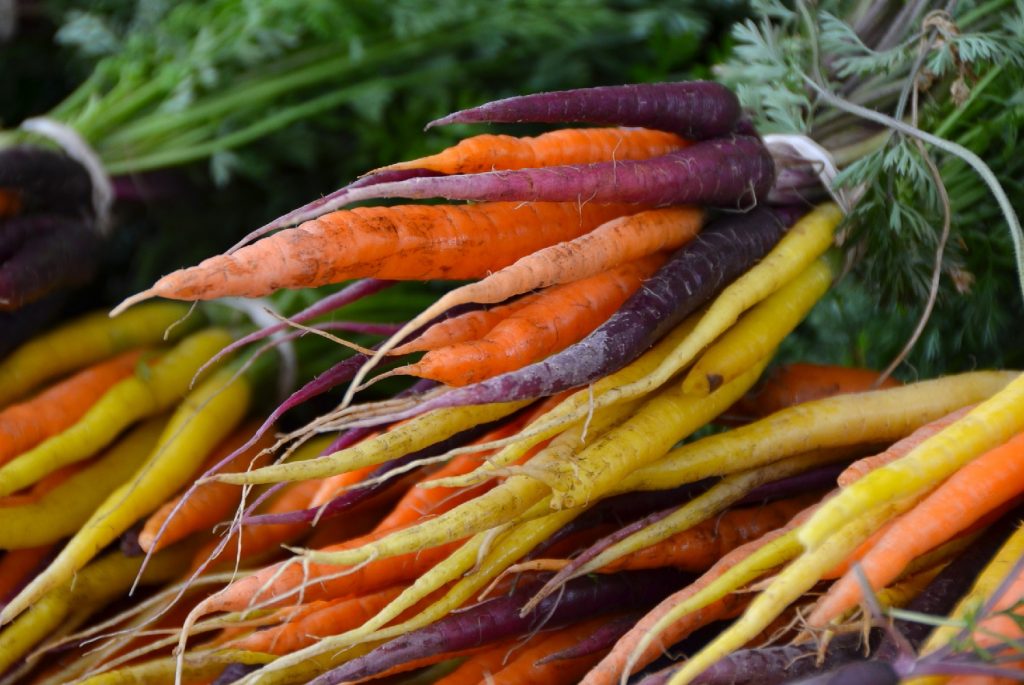

We’re here to help! Wild Yards is a completely free website that is 100% dedicated to helping you create a wildlife-friendly, sustainable yard. Read more
WildYards is reader-supported. When you buy a product through a link on our site, we may earn a comission. Every product is independently selected by our (obsessive) editors and our reviews are unbiased and objective. Read more about our mission or our privacy policy.
Carrots are orange, right? Right! But not all carrots are orange. The modern carrots we purchase from our local supermarkets are much different from the multicolored root vegetables that carrots once were. So, just what color is a carrot, why are some carrots different colors, and why does all this even matter?
Carrots come in a variety of colors. Western carrots come in shades of white, yellow, and orange, while Eastern carrots come in red, purple, and black. Carrots contain different amounts of vitamins and antioxidants depending on their color, which also affects the way they taste.
What color were carrots originally?
Domestic carrots originated over 5,000 years ago in Central Asia, and probably developed from wild carrot species native to Iran and Afghanistan. Originally, carrots were grown for their seeds and foliage. But over time, the domestic carrot was cultivated to reduce bitterness and improve sweetness, making the roots more palatable.
It’s said that the reason carrots are orange is that patriotic 17th-century Dutch carrot growers developed them to honor William of Orange. Unfortunately, there isn’t much evidence to back this up. Ironically, the truth is much less colorful.
All modern carrots share a common ancestor, Daucus carota, a pale white wild carrot. Middle Eastern farmers were the first to discover purple carrots. Over time, yellow cultivars were found and introduced to vegetable gardens. By the 14th century, carrots had been introduced in Europe where yellow carrots began to develop the traditional orange hue we see today.
Regardless of why we tend to only see orange carrots nowadays, carrots have come in different colors for thousands of years. So the question “what color is a carrot?” has almost always had multiple answers.

Do carrots still come in a variety of colors?
Orange carrots may be the most popular, but you can still grow carrots of other colors these days. Nurseries that specialize in fruits and vegetables frequently capitalize on the novelty aspect of multicolored carrots. So, surprisingly, they’re not that hard to find.
Seed catalogs are another great option. Because carrots are so easy to grow from seeds, you can find rainbow carrot seed mixes to sow in your own vegetable garden. Just be careful not to grow them near your fennel — you may mistake them for carrot tops and uproot them. And consider deer-proofing your vegetable patch because deer love to nibble on carrots.
Which colors do carrots come in?
Western carrot plants grow white, yellow, and orange roots. Eastern carrots produce roots in shades of red, purple, and black. It’s worth noting that the nutrients in the soil can influence how pale or vivid the carrot becomes.
Interestingly, some purple carrots have different colors on the inside. It’s not uncommon to bite into a purple carrot to reveal a white, orange, or yellow center. These cultivars are a relatively modern invention, and they’re a nice way to dress up a dinner plate.

What makes carrots different colors?
There are lots of different answers to the question “what color is a carrot?”, but just why do carrots come in different colors, anyway? The answer has to do with the vegetable’s nutritional content. Let’s break it down:
- Orange carrots are rich in beta carotene, which contributes to their iconic pigment.
- Yellow carrots contain high amounts of lutein, commonly called “the eye vitamin”.
- White carrots contain only trace amounts of beta carotene, resulting in poor pigmentation.
- Red carrots are full of lycopene, which also gives tomatoes their red color.
- Purple carrots contain high levels of anthocyanins, much like eggplants, and the more anthocyanins they produce, the darker they become. The darkest purple carrots are so full of anthocyanins that they appear black in color.
- Purple carrots with orange centers contain anthocyanins and beta carotene.
- Purple carrots with yellow centers contain anthocyanins and lutein.
- Purple carrots with white centers contain anthocyanins and very little beta carotene.
Multicolored carrots are a feast for the eyes, and they’re also highly nutritious. But just because they’re good for you doesn’t mean they have a pleasant taste. That begs the question…
Do multicolored carrots taste different than orange carrots?
Yes, they certainly do! Orange carrots are the most popular variety because they’re widely considered to be the most palatable. They’re sweet without being too sweet. Their flavor is distinctive, but not overpowering. They also have a nice texture, being crisp and juicy with a good crunch. But multicolored carrots can taste different thanks to their varying pigments.
Purple Carrots
The first thing you notice when you bite into a purple carrot is that they’re much sweeter than the orange ones. And they have a slightly zesty, peppery flavor, too, that’s almost reminiscent of radishes. The deeper the purple carrot’s color, the more anthocyanins it contains, which makes it an even better choice for brain and heart health.
Red Carrots
If you were to taste a red carrot and an orange carrot blindfolded, it’s unlikely you’d notice much difference. If anything, that iconic carrot-y flavor might be just a tad bolder with the red carrot. These carrots are just as crisp and snappy as the orange ones, but their lycopene content means they’re a richer source of anti-inflammatory antioxidants.
Yellow Carrots
How yellow carrots taste depends on when you pick them. Older carrots are tougher and have a slight earthiness to them. Tender young yellow carrots are sweeter than orange or even purple carrots. They taste similar to sweet potatoes with a deliciously fruity aftertaste.
White Carrots
These carrots taste very similar to parsnips. They have the nice, earthy flavors you’d expect a root vegetable to have, but without any bitterness. White carrots are pleasantly sweet and notably crunchy, making them a tasty alternative to orange carrots.
How can you use multicolored carrots?
Regardless of their color, you can use any carrot as you would a traditional orange carrot. Cut them into small pieces and throw them into a stew. Slice them into strips and pair them with ranch dressing or peanut butter to make a nutritious snack. Or cut them up like French fries and toss them in your air fryer with a little oil and salt for a tasty dinner side dish.
So, what color is a carrot? Just about any color you can imagine! Whichever carrot you like best, these versatile vegetables can improve your health from the inside out, and taste delicious at the same time.
